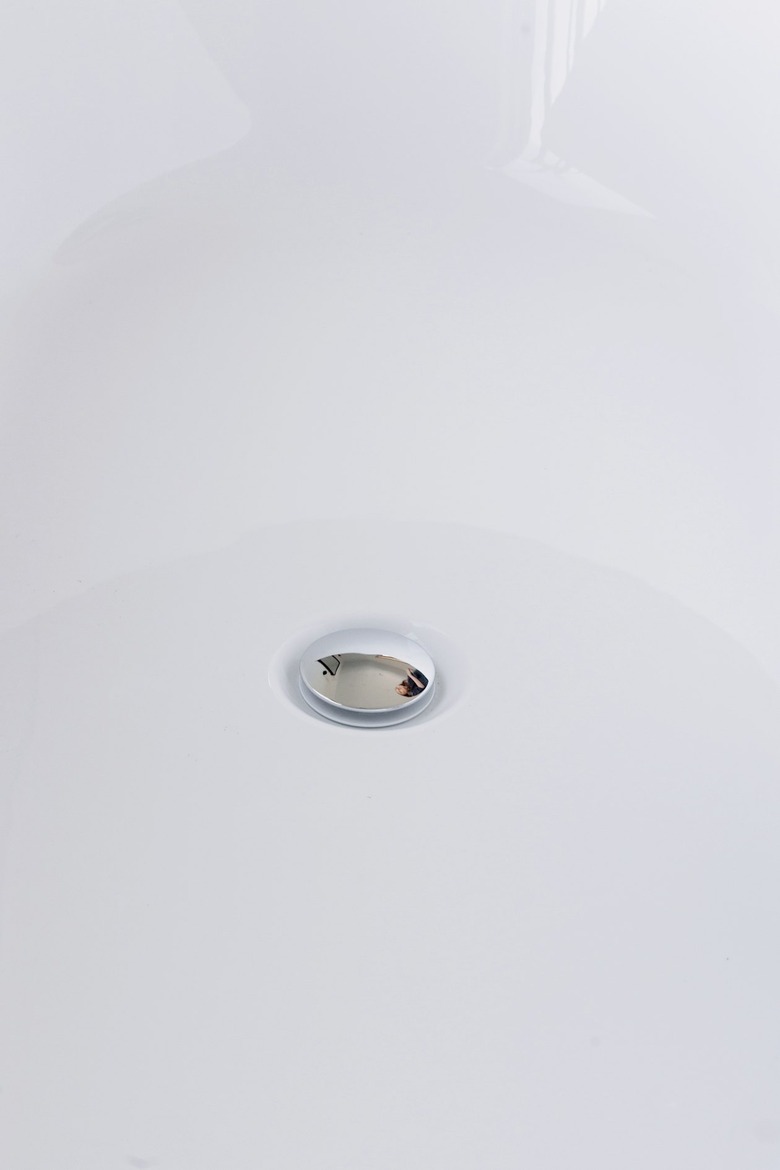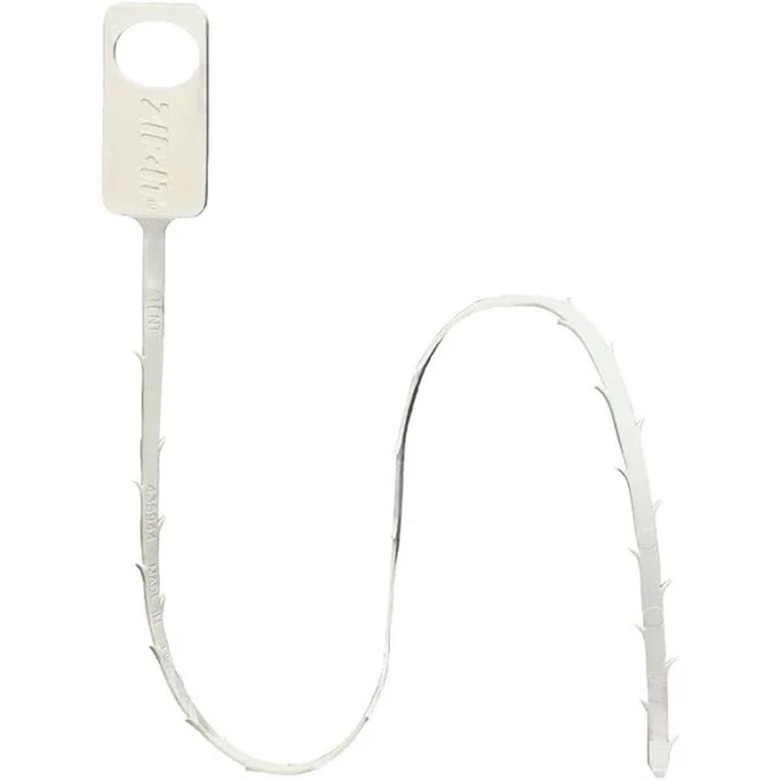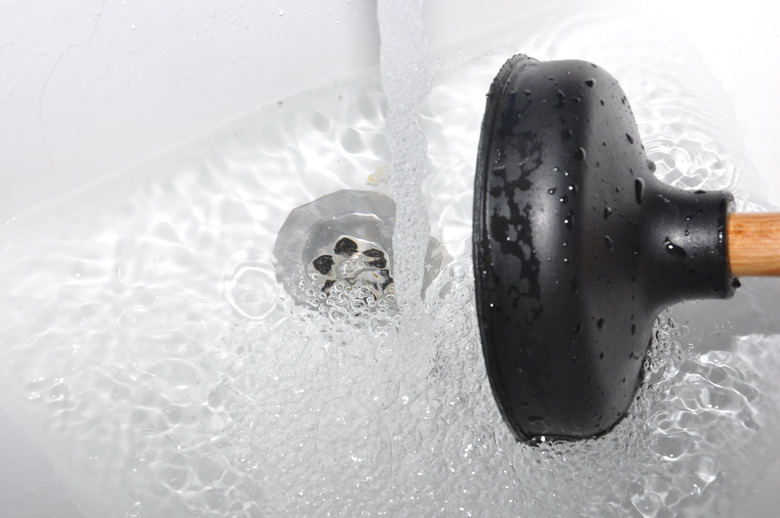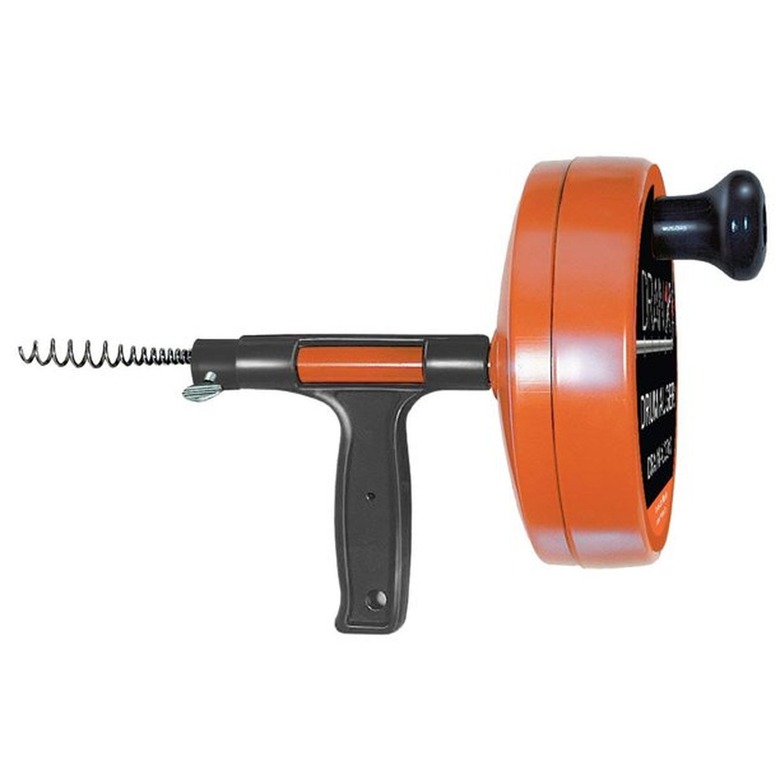How To Unclog A Bathtub Drain
A clog in the bathtub is one of those problems that requires immediate action. After all, it's impossible to keep the tub clean if the water won't drain properly. If not cleared, the clog could get worse over time, resulting in more of a mess to clean up and a harder clog to clear. Since many bathroom drain clogs can be cleared with just a little effort, clearing the tub drain should start with the simplest options first.
Though many homeowners rely on drain cleaners or a combination of baking soda and hot water as unclogging methods, there are more effective ways to clear clogs, like Zip-it tools. As a last resort, snaking the drain usually removes even the most stubborn clog.
Remove the Bathtub Stopper
Clearing a clogged drain is easiest in most cases with the stopper out of the way. Bathtub stoppers vary in how they function and how you remove them.
- The toe-touch, push-down type of stopper can be removed by starting with it in the open position and turning the cap counterclockwise until the cap comes off. Loosen the setscrew to lift out the full stopper assembly, revealing a crossbar piece beneath it.
- The type of stopper that has a small knob on top works in a similar fashion. Twist the knob counterclockwise while holding the open stopper's body with the other hand. Once the knob is removed, use a flat-head screwdriver to remove the center cylinder of the stopper, revealing the tub's crossbar piece in the drain hole. Some similar tub stoppers require an Allen wrench instead of a screwdriver.
- A Flip-It stopper comes out by simply wiggling and turning it a bit in either direction.
- Some other types of stoppers come apart in similar ways, requiring the stopper top or cap to be twisted off and revealing an assembly inside that comes out, in most cases, with a few counterclockwise turns of a screwdriver.
Unclog with a Zip-It Tool
The typical clog in a bathroom drain is a combination of hair and soap or shampoo products. These team up to create blobs that hinder the flow of water, causing even greater buildup if it is not cleared. In many cases, these clogs can be cleared using a simple plastic drain-cleaning tool that looks like a long zip tie with barbed areas on its sides. These do an excellent job of pulling hair out of a clogged drain.
If you don't have a Zip-It tool, several feet of a stiff wire, such as a thin wire coat hanger, works almost as well. Bend the top inch or so on one end into a tight hook using pliers. Here's how to use the Zip-It tool properly:
- Push the plastic tool or the hook end of the bent wire down into the drain opening a couple feet, wiggle it around a bit and then pull it out.
- Discard any matter that comes out of the drain so it doesn't end up back in the drain.
- Push the tool back in several more times, and once nothing much comes out of the drain, run the water to rinse the tub and see if the clog has cleared. If not, repeat the entire process.
Use a Plunger
An old-fashioned cup-style or sink plunger is another great tool for unclogging a bathtub or shower drain without chemicals. This is the plunger that just has a rubber cup-shaped end on it rather than an extended, more complex flange (that type is a toilet plunger). A plunger with a smaller cup and handle will also do the trick, although a long handle and large cup may be easier to maneuver to ensure good suction. For best results, use a plunger that is in good shape and not cracked or stiff, as these may not perform well.
To plunge the drain:
- Run enough water into the tub to cover the drain opening by an inch or two.
- Place a wet washcloth over the overflow hole beneath the tub spout, holding it securely in place as you manipulate the plunger. If this is difficult on your own, ask another household member to hold the cloth in place. Covering the overflow hole prevents air from moving into the drain line and breaking the suction of the plunging.
- Push the plunger down over the drain opening six or seven times and then pull it up. If the water drains, you've cleared the issue, but if not, try again.
The plunger will most likely draw some gunk and hair up into the tub during the plunging process. For best results, clear this away or push it to the back of the tub out of the water so you can remove it after plunging. This keeps the material from going back into the drain, where it could contribute to another clog. For fastest results, wear rubber gloves so you can scoop the gunky matter or hair out as soon as you see it and deposit it into a nearby trash can. Paper towels also come in handy.
Snaking a Tub Drain
A drain snake, also called a drum auger or plumbers' snake, comes in handy for stubborn clogs. This tool is a steel cable that is sometimes enclosed in a plastic or metal drum. A handle outside the drum or at the end of the snake allows some wiggling and control of the snake cable. Though snakes come in different lengths, the 15- or 25-foot versions sold at home centers and hardware stores are suitable for most household clogs.
Using a snake in the bathtub requires pushing the snake cable through the overflow hole in the tub wall. This is the area covered by a metal disc plate beneath the tub spout on a tub model with the spout attached to the tub wall. Remove the plate by removing the screws holding it in place. (You may also need to use a flat-head screwdriver to wriggle it loose.)
Pulling the plate off also pulls out the drain stopper linkage on some tubs where a lever on the tub wall controls the stopper. You may need a pair of pliers to help get at this assembly of the tub. In some cases, some of the clogging matter will be stuck on the linkage; if so, wipe it off so it will be clean when you put it back in place.
- While wearing work gloves and eye protection, push about 30 inches of the snake cable into the overflow hole in the tub using your hands, not the crank. This feeds the snake down the overflow pipe and into the P-trap beneath the tub. Push gently to avoid damaging the plumbing. If you are using a snake with an enclosed housing, keep that housing close to the tub opening for the most control.
- Once you feel the snake hit an obstruction that may be blockage, slowly crank the handle clockwise to collect debris and create an opening in the blockage. If it feels like the snake is hitting a pipe and can't get around a curve, turn the handle counterclockwise while still gently pushing the snake forward until it passes the obstruction. Then, continue turning the crank clockwise to push through and collect the clogging material. Note that with some drain snakes, you have to tighten a setscrew to clamp down on the cable before turning the crank; others clamp the cable automatically.
- Gently pull out the snake by hand, slightly turning the handle counterclockwise from time to time to wiggle the snake free if necessary. Wipe off any material the snake has removed using paper towels or old rags.
- Run water in the tub to see if the blockage has cleared. If not, snake the tub again. It often takes multiple attempts to remove a sizable amount of crud.
- Once you are satisfied with the results, feed the stopper linkage back down through the overflow hole in the tub. Once the attached overflow cover plate is snugly against the tub, replace the screws and tighten them with a screwdriver.




